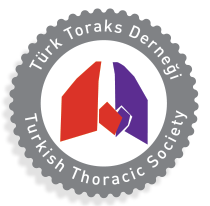Abstract
Abstract
Objective:
Currently, the most commonly used tobacco products are cigarettes. In various studies, the ages of starting to smoke and becoming dependent are often identified as high school and college ages. We organized a series of activities related with smoking on May 31 due to “The world no-smoking day”, at Ankara Campus of Fatih University. Our goal was to draw attention to the “harmful effects of smoking”, as well as to the Law No. 5727, which was to be put into effect as of July 2009, and we also aimed at encouraging our students to quit smoking.
Material and Methods:
For this purpose, a questionnaire was administered, followed by a seminar and a campaign called “Campaign with prize to quit smoking” was organized. A questionnaire consisting of 25 questions was administered to students at the end of March in 2009. A total of 493 people participated in the survey.
Results:
Four hundred ninety-three students participated in the survey. 41.6% of participants (n=205) were male. Participants’ smoking rate was 43.2% (n=207). Age, sex, graduation, parent education, cohabitation with family and sibling smoking status were evaluated. Most non-smokers were in the 19-20 years old group, whereas regular smokers were in the 20-21 years old group. 70.9% of nonsmokers were female, 21.9% of regular smokers were male. Among regular smokers, students who graduated from science high schools were the least regular smokers. Having a sibling (especially first and second sibling) who is a regular smoker significantly increased the risk of cigarette smoking. Between the departments, “Nursing School” students have high rates of never smokers. The highest rate of regular smokers has been found in the “Business Management” and “Medical Imaging Techniques” programs.
Conclusion:
In addition to taking legal measures to prevent young people frombeginning to smoke, continuing education programs are important. If necessary, support by specialists should be provided. Awareness of the each of the students studying in health departments should be promoted so that they will become health care providers. Besides, during their education, they should be taught that they will become a role model in the public as health providers. (Turk Toraks Derg 2012; 13: 169-73)



